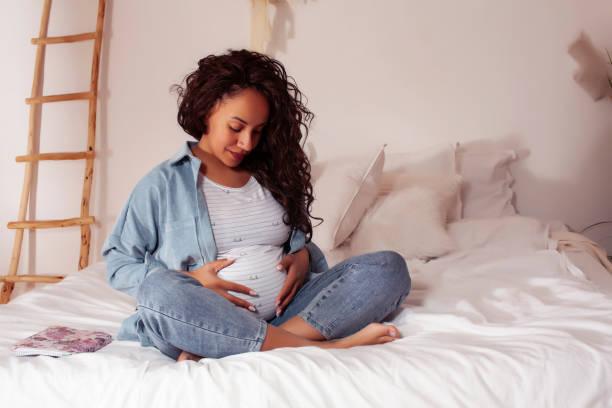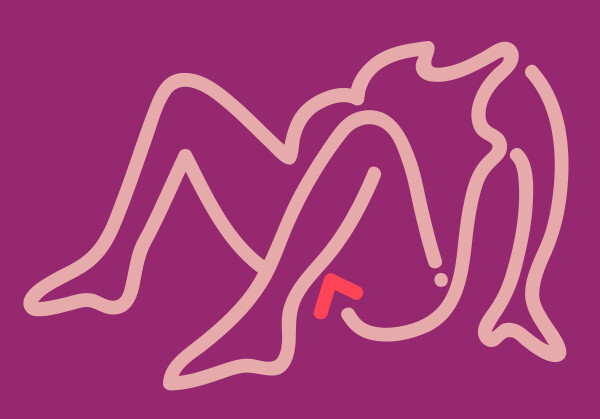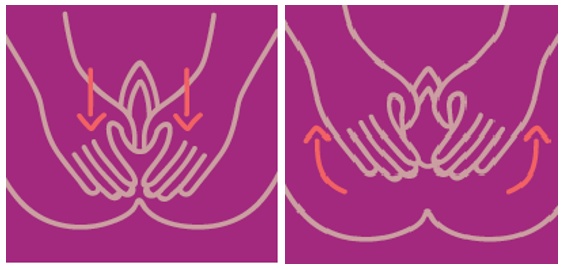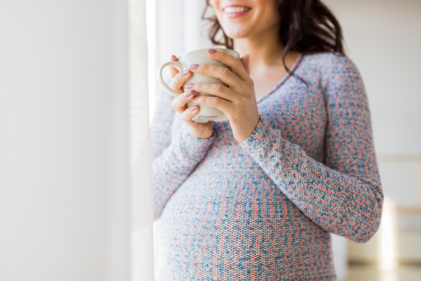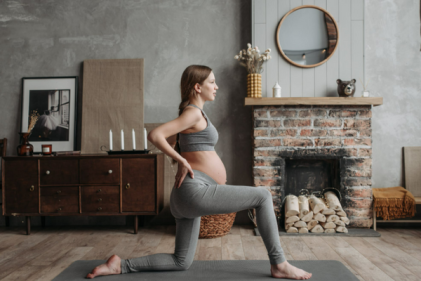According to a new piece of qualitative research undertaken with 60 Irish women by My Expert Midwife, 45% of them did not feel prepared for their birth experience.
Clinical data shows that 9 in 10 first time mothers who have a vaginal birth will experience some sort of perineal damage, such as a tear, graze, or episiotomy, which can contribute to a slower physical and psychological recovery. Yet, half of the women surveyed did not know that they might sustain perineal trauma when giving birth.
This startling lack of awareness might help to explain why only a quarter of the Irish women surveyed carried out perineal massage regularly during their pregnancy - a technique which has been shown to reduce the incidence and severity of perineal damage. Almost half of those My Expert Midwife spoke to did indeed experience a tear during birth, and just over a third had an episiotomy.
The research highlights a critical need for greater education on the physical effects of childbirth. Of the women who participated in the survey, 83% said that health professionals don’t deliver sufficient information about perineal massage and its benefits. Of those who were aware of what perineal massage is (82%), almost three quarters learned about it from the internet or social media and only a quarter got their information from a Midwife or GP.
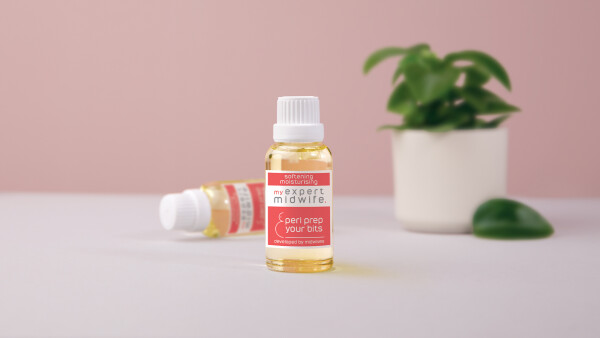
While 72% of Irish women said they know that performing perineal massage regularly from 34 weeks can help to reduce tearing, only 58% said they know how to do it, and just a quarter did it regularly.
Sadly, almost two thirds of the women believe there is a societal stigma attached to discussing perineal massage, over half said they are embarrassed to talk about it, and 83% attribute the lack of discussion in media about perineal massage to it not being normalised in society.
Jess Sheridan, Registered Irish Midwife comments: “Women in Ireland experience a high rate of episiotomy and tearing, and often it’s unexpected, particularly for first time mums. New mums have enough to be dealing with when they have a newborn, and perineal trauma can have a huge impact on those first few weeks; areas such as caring for baby, mobilising, going to the toilet, sleep and getting out of the house are all affected when new mums have suffered perineal trauma. At My Expert Midwife we believe in the importance of imparting knowledge about all aspects of childbirth and preparing women for all eventualities. It’s so important to empower women with knowledge and give them the tools they need to manage, especially around perineal massage. We hope more people will be comfortable talking about the benefits of it and therefore break down the stigma around perineal massage and vaginas and vulvas in general.”
Lesley Gilchrist, Registered Midwife and Founder of My Expert Midwife, the award-winning skincare brand for pregnancy, new mums and newborns, comments: “Severe perineal trauma may not only have a psychological impact. It can also lead to long term issues, such as urinary and/or faecal incontinence, pelvic organ prolapse, vesicovaginal fistulas, lower levels of sexual satisfaction or pain during intercourse. Greater understanding of perineal trauma and preventative measures, including perineal massage, is really vital.”
Lesley has shared her expert advice on how to carry out perineal massage to help educate and empower women to have a more positive birth experience. Read on for more…
First things first, what is the perineum?
The perineum is the patch of skin and muscle between your vagina and anus and it is this part that is most likely to tear – or be cut (episiotomy) - during childbirth.
While the majority of minor tears will heal without any long-term problems, 3rd and 4th degree tears, which are more severe and involve the muscle fibres of the anal sphincter, often need to be repaired in an operating theatre.

How to prevent tearing during childbirth
Some of the risks of having a tear during childbirth are predetermined by genetics, the position of your baby during birth and the position you are in when you give birth. However, there are some things you can do to reduce the extent of tearing in childbirth.
- Avoid active pushing or the ‘Valsalva’ manoeuvre, where you hold your breath and push during the pushing stage of labour. Push when you get the urge and avoid holding your breath. Hypnobirthing techniques are good to help you learn how to breathe your baby down, especially as their head crowns.
- Give birth in any position other than on your back. Upright positions are advisable but, if you are on the bed, lying on your left or right side are good positions, too.
- Ask your midwife about using a warm perineal compress, as research has shown that a warm swab or flannel applied to the perineum at the point where your baby’s head is crowning can help tissues to stretch and reduce perineal trauma.
- Practice a simple technique called perineal massage which has been clinically proven to help make the perineum more elastic and to stretch better during childbirth, therefore reducing your risk of tearing and the need for an episiotomy (a cut to the perineum, which may be recommended for medical reasons and should only be performed with your informed consent).
A step-by-step guide to perineal massage
You may want to discuss perineal massage with your midwife, but below is a simple guide to help you.
It is recommended to start perineal massage from 34 weeks pregnant, doing it three to four times a week, for around three or four minutes at a time.
- First, find a perineal massage oil. You can use one specially blended and designed for perineal massage – such as Peri Prep Your Bits - or an oil such as almond oil.
- Wash your hands.
- Sit comfortably, bring your knees together and towards your chest and then open your knees like a book, or you may find it easier to put one foot on the toilet/bath/stool in a similar way to how you would insert a tampon.
- Put a small amount of the massage oil on your perineum to make the massage more comfortable.
- Using your thumbs, insert them into your vagina and then place your forefingers on the skin of your perineum.
- You now need to stretch this skin gently by pressing downwards towards your anus and to the sides until you feel a slight burning, stretching sensation
- Hold the stretch for 1 to 2 minutes. Then massage the area between your thumb and fingers upwards and outwards and back again in a “U” shape.
Partners and perineal massage
Perineal massage should not be painful, and, with time and practice, it will become effortless. However, as your pregnancy progresses, you may find it easier to invite your partner to perform this for you. Below is some guidance to help with carrying out perineal massage with your partner:
- Become as comfortable and relaxed as possible. This may mean adapting your environment such as dimming lights, adding pillows and cushions for support.
- Before starting, discuss perineal massage in as much detail as possible with your partner. This will help them to understand the method required, why you are doing it and how often it needs to be done.
- The easiest position for a partner to perform perineal massage is probably with you in a semi-recumbent position - as the diagram demonstrates - on a bed or sofa. However, it is fine to experiment with other positions, such as lying on your left or right side.
- Your partner will probably find it easiest to use their fingers rather than their thumbs but, again, it is fine to try both to see what works best for you.
- Once comfortable, apply some perineal massage oil on the patch of skin between your vagina and anus. Using both hands, your partner should gently insert their index finger and middle finger on either side into the vagina, up to about the 2nd knuckle (try starting with just the index finger of each side if you don’t find this comfortable).
- Using the same method as demonstrated above, they need to move their fingers in a ‘U’ shape for a few minutes, whilst you guide them as to what feels comfortable and when to start and stop.
To help mums-to-be prepare for childbirth, My Expert Midwife has launched the #PowerToThePerineum campaign to ignite conversations about perineal trauma, address the associated taboos and raise awareness of the steps that women can take to protect their perineum during labour.

